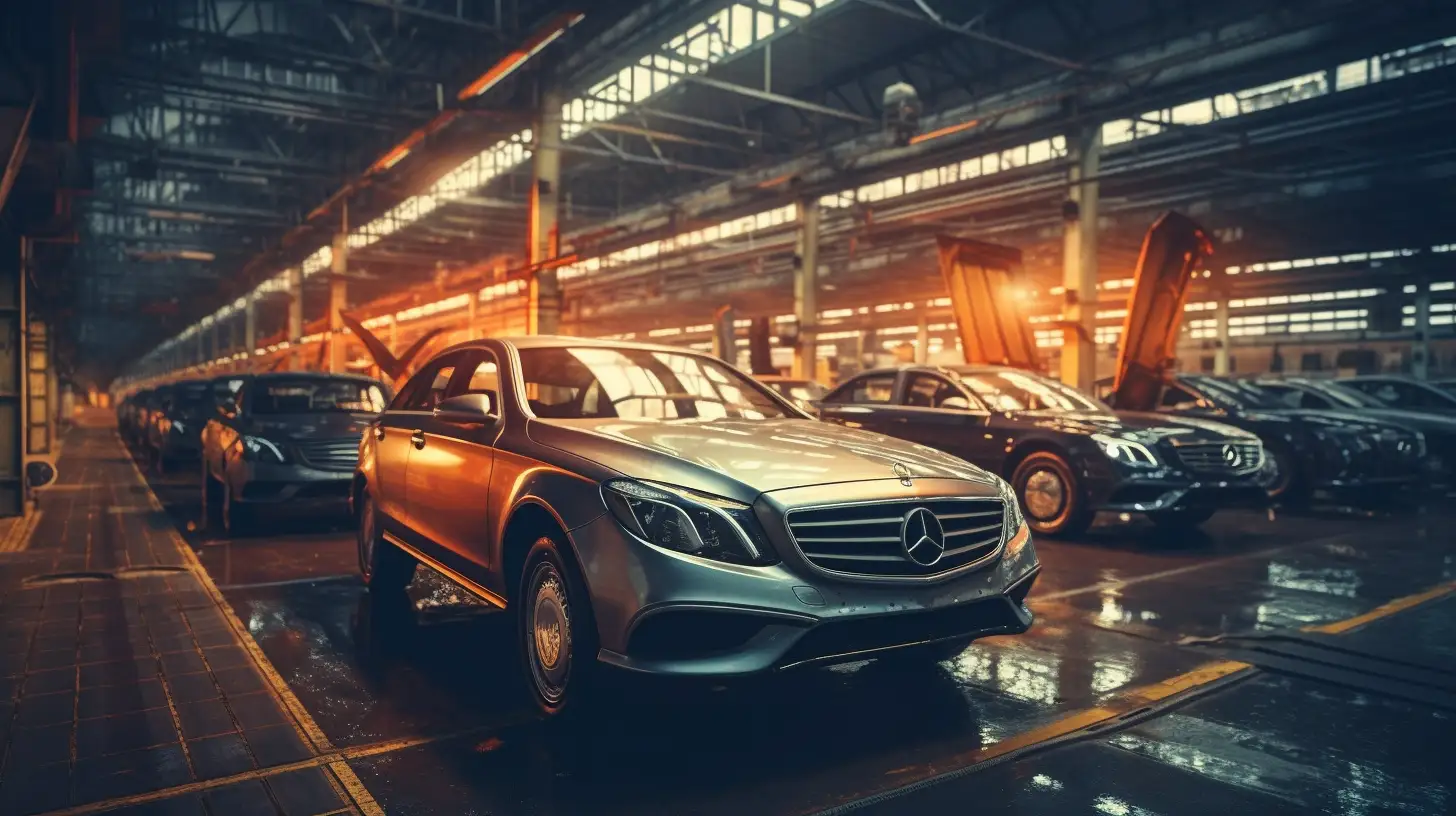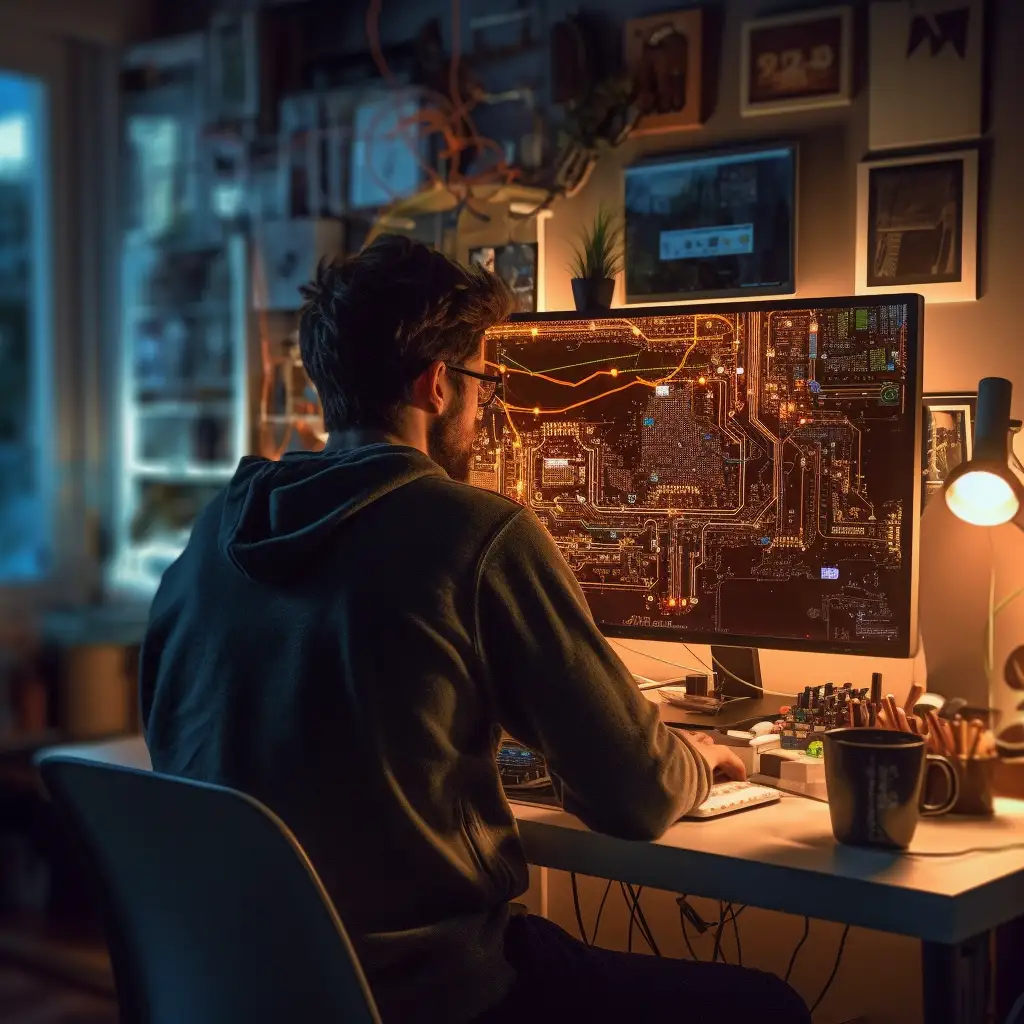
What determines a PCB design for the automotive industry? Robustness first and then price.
What makes working for global automotive leaders challenging if you are a senior PCB designer? We asked Petr Horák, the PCB designer of the Consilia company.
Let's be honest, a reference, such as Mercedes Benz, BMW, Volkswagen Group, or Volvo, simply sounds attractive/resonates. These are some of the brands you want to have in your portfolio. Because the simple fact you have realized some parts of supplier orders for these companies tells something about you; at least, it shows you can follow the rules and processes, meet the deadlines and quality requirements. But let's look at the question differently: What makes working for global automotive leaders challenging if you are a senior PCB designer? And, although you can design 20 layer boards, you suddenly get back to the basic 2 layer ones. We asked Petr Horák, the PCB designer of the Consilia company, which designs the main lighting systems for suppliers in the automotive industry.
The automotive industry is specific as all your products have to last at least fifteen or even twenty years
That is why the robustness and durability of the particular device is of the highest interest. And the second important thing is the price because anything you design will be manufactured in the series of hundreds of thousands items, where any minor cost saving may mean considerable resources," says the mechatronics graduate of the Brno University of Technology, who has been specializing in the PCB design for the last twelve years.
[interview-otazka]How is working for the automotive industry different from the other segments you operate in -- for example, the aerospace, the internet infrastructure, or the industrial?[interview-otazka]
The difference is in the rules and strict processes that must be observed. Everything has to be utterly professional from the start of the cooperation. You have to abide by the guidelines, deadlines, process methods. Everything you design undergoes testing and multi-round approval. The automotive industry has extremely strict rules in general.
[interview-otazka]Do you miss space for your own creativity in the course of the process?[interview-otazka]
If I worked only on this kind of project, maybe the space for my creativity would be a bit limited. But since this was a six-month journey, it was exciting because I was in an environment that was intolerant to dead ends or mistakes. Everything has to be precise, and it is crucial to meet the deadlines. You feel a slightly different pressure, and, of course, you respect the customer and their brand because you long to succeed in an environment all the world wants to work in.
[interview-otazka]What specific issues did you deal with in the project?[interview-otazka]
Long story short - the main lighting systems for the automotive industry that are optimized in terms of function, performance and costs. More specifically, the PCBs for the systems. We had to process the individual designs quickly and in accordance with the automotive standards.
[interview-otazka]What made it interesting, designwise?[interview-otazka]
Interesting instructions are not always only about the number of layers or fast buses. In the automotive industry, you often work with 2 layer boards because they are the most favorable during manufacturing. Even though manufacturers can make circuits with the thickness of 70 microns, in the automotive industry the rule 'the thicker, the better' is still valid.
The board is strained, and it is closely monitored to make sure everything lasts and works even in very demanding conditions; therefore, some things on a 2 layer board are on the edge of designability.
When working on a new lighting system design, you have to design tens of different PCBs. The boards differ in shapes, dimensions, and mechanical limits. Individual customers have specific requirements concerning parts and their temperature load.
Every time we receive a requirement for a new lighting technology system, we provide new PBC sets - all with unique designs.
[interview-otazka]How has the elektromobility boom changed the field?[interview-otazka]
Each electric device radiates a certain magnetic field, which is why the boards, and through them the complete functional systems, influence each other, and this is an important topic of the discussion.
You cannot simply manufacture a headlight and install it on a car. Each individual piece has to communicate with the other devices in a certain constellation so that the boards and the whole modules and systems do not influence each other.
Besides this, the automotive industry belongs to more or less stable fields. At least the development of the boards for the basic lighting systems is not so fast, which has been proved by our more than six-year-long cooperation. The materials and numbers of layers have not changed much through the course of time; they have only started being fixed with the more powerful parts that give you 'more bang for your buck.'
[interview-otazka]Does it mean the most significant change has been made to the chips?[interview-otazka]
That is right. There are new chips, the LEDs and their parameters have evolved, and the designs are influenced by design trends and requirements. Generally speaking, there are two ways in the automotive industry -- one is a mass way, and the other one is a pioneer way that experiments much more. The latter works with laser technologies, they make design creations and innovations. However, we cooperate more often with the mass production segment, where stability, durability, and price are the key features.
[interview-otazka]Can you think about a puzzle you had to solve in-house while completing an order?[interview-otazka]
restrictions and requirements, and with its parts, components that are to be fixed on the board. The problem tends to be the cooling because you have to fix a high number of thermally efficient parts, which are delicate at the same time, on a small surface.
Sometimes you encounter a situation when you do not find out that the surface of a board is not sufficient for the parts until you are in the layout phase of the project. Therefore, the job is often not only about a design and the design of a board itself, but also about a liaison with mechanics, hardware designers, and project leaders and finding concrete solutions.
Sometimes you change some parts to 'tune up' signal paths or modify mechanics because of the cooling or assembly at the very end. The production volume consists of hundreds of thousands of pieces, so the optimized design is strongly stressed from the production and assembly point of view.
The boards must comply with very strict standards and norms for the automotive industry, which often comprise tens of pages. Regarding the stress on simplicity, robustness, and price, a certain conservative approach is still apparent here: the base is still a 2 layer board with as plain manufacturing technologies as possible.
It is one of the reasons why the basic design rules and processes have remained almost the same throughout the years, and that is why it is not a problem for us to start working on similar projects even after a longer break. Simply said, after all those years of working for the automotive industry, the rules have still remained somewhere deep in my memory.
Next Interesting Topics

A Different Way of Working from Home
PCB designer from Consilia works from his garden house. The walk from his family house takes just about 10 seconds, but, symbolically, it divides his two worlds.
“It is a real job, just without daily commuting, which would take me about three hours a day.“

I need to heat up my brain. I would not enjoy making the same boards over and over again.
Petr Horák doesn't like to go down smooth ways.
"I like project thinking and focusing on one specific thing. But at the same time, after a while, I need to switch gears and start focusing on a completely different segment. That's why I'm very keen on working on a variety of project types." says the PCB designer, who has now been working for Consilia for six years.

TETRA base station that goes to the edge of physical limits
The ground TETRA base station, whose development we worked on between 2012-2017, thanks to our oscillators combined with excellent energetic efficiency, is still at the top among the products which can be made with current technologies.

When you are an electrical engineer, you can calculate energy savings in your house
Martin Tesař, who manages a company focusing on electronics development, built a low-energy house more or less with his own hands during the last few years.
“I try to be a bit of an evangelist in my vicinity,” says the CEO of Aton Benu Consult.


